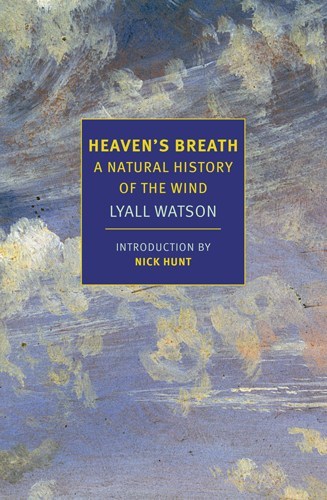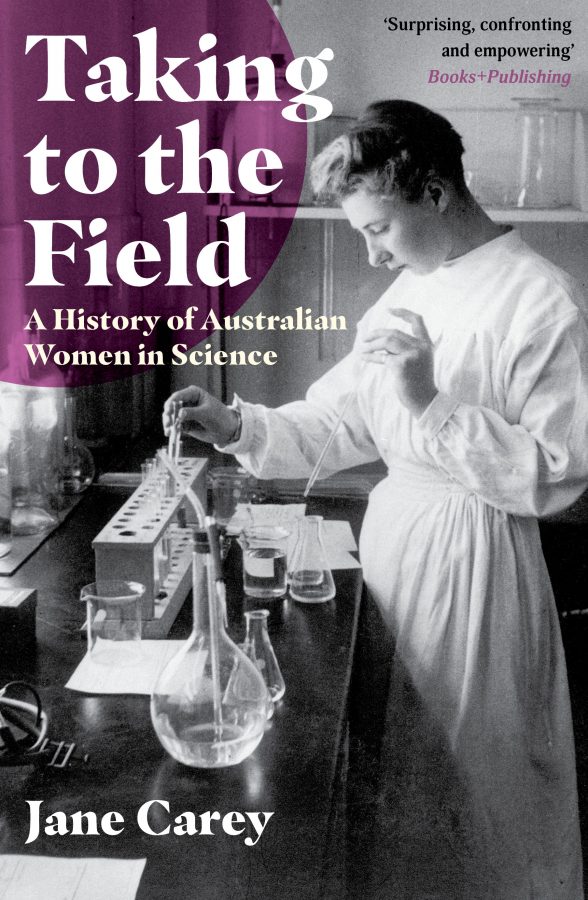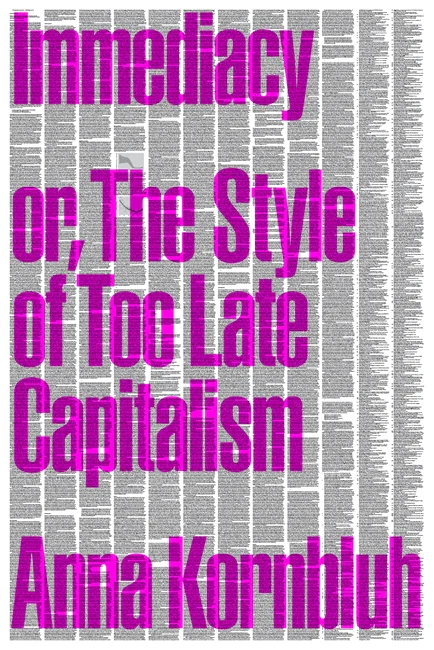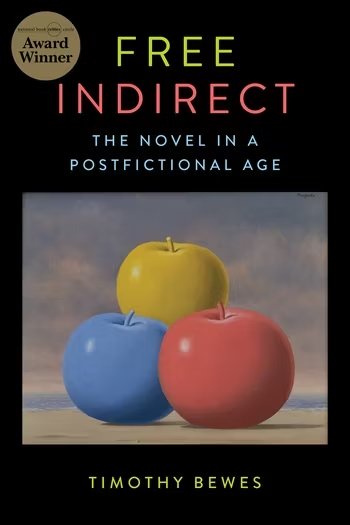There is no wall through which wind cannot pass.
— Chinese proverb
What I remember is my grandmother teaching me how to draw the wind. Her pencil marking the paper with the lightest touch. She would then lick her thumb and smudge the line. The picture would blur; things would run into each other, blow into each other. A dog would find its way into the body of a child. A tree would drift through a building. Curtains would merge with a face. With this touch and movement, closer to metaphor than representation, her pictures would come alive. They would become windy and joyful and sometimes disturbing. It was, I think, the way her thumb acted on behalf of the wind, refusing to leave any part of the picture in isolation, refusing to adhere to the lie of partitions. This same lie mediates our understandings of air, but that is difficult to draw and, despite entering and exiting us with every breath, harder to notice. Wind is perceptibly more eventful. We feel and know it as a relation; it picks up, blows over, rustles, whirls around, scatters, erodes, confuses, sculpts, suspends, circulates, devastates. This might amount to a language of the wind, but what of its natural history?
The prospect is irresistibly boundless. But like most things, the harder you look the more specific wind becomes (which is not the same as simplification). I wonder if this was Lyall Watson’s experience when writing Heaven’s Breath (originally published in 1984). Watson, who wrote on subjects ranging from the potential of pigs to sumo wrestling to the supernatural, attends to wind as both metaphor and method, as a circulatory and nervous system that passes through physics, geography, history, mythology, biology, psychology, and philosophy. Perhaps it is best described as an elemental anthropology, attending not only to life but what makes life possible here on Earth, and impossible elsewhere. Like my grandmother’s thumb, Watson’s writing follows and performs the effects of the wind (effects that are integral to life itself) by not taking it for granted. And so we read from the largest to the smallest of scales, from ‘breathless worlds’ in the solar system devoid of wind to the complexity of bacterial life born from a sneeze.
There is an art to pulling off this sort of encyclopedic writing, where attention drifts and coheres, digresses and doubles back. Watson is good at short-circuiting his own scholarship with flights of fancy and evocative images. Without wind or atmosphere, we read, ‘worlds are hard-pounded deserts, dry as old bones, where alien feet fall soundlessly and even the dust is dead’. In order for Earth to become a ball of living matter ‘it belched… the hot breath of the young planet bubbled up through the cracks and fissures in the crust, breaking out in the form of geysers, fumaroles and explosive volcanic eruptions’. Or: ‘The air, our aura, serves the same function as the fur on a fox or the shell of a snail, but is more sensitive and more responsive.’ Or: a cold front ‘edges forward beneath the warmer air in its path, prying it up and rolling it back like a toe tucked under carpet’, while a warm front ‘rides up high over the cooler air in its path, like the curled tip of a snow ski more than a thousand kilometers long’. This attention to the imaging of wind, its roaming and surprising qualities, takes Watson across classifications of institutionalised knowledge that continue to partition what is natural from what is cultural.
Such classifications, academic as they may seem, hold sway in the tradition of colonial thought (and pedagogy), which was founded on the externalisation – the Othering – of nature and peoples, as well as the supposed fixity of culture. We do not have to look hard to see the effects of this thinking in the disasters of speculative financial capitalism, where all kinds of life on the planet is continually conceived, to use an economic term, as an ‘externality’ – a third party that is affected, though not directly related, to the creation and maintenance of markets. A glance at the news – the dispossession of Indigenous land to make way for the deforestation of the world’s largest rainforest, the Amazon; the tireless rollbacks of environmental regulations in the US; the expansion of the palm oil industry, the depredation of precious metals, to name just a few – reveals that the preservation of markets is being sold as the winds of progress, as though nothing could be done to stop the violent supply chains that terminate in the latest devices or products, from smartphones to potato chips; everything disappears into notions of nature as an abstraction, a resource that is always elsewhere and other. This is its own sort of nefarious art, once described by Marx as the robbing of resources and fertility from labour and soil, body and world (or: the usurpation of life itself).
Watson, who held degrees in botony, zoology, and ethology, must have been acutely aware of this academic framing of nature on one side and culture on the other, and the broader effects it had on the ecologies that held his curiosity. In the 1970s and 80s this dualism was undergoing a radical critique, often described in anthropology as a ‘methodological moment’, which appeared to unsettle academic certitudes that had, to a large extent, caused many of the problems in the first place (for some this made disciplines such as anthropology irredeemable). On the one hand, the term ‘culture’ itself became unacceptable for many scholars, unless used as an adjective. As Arjun Appadurai wrote, the problem with using the term as a noun ‘has to do with its implication that culture is some kind of object, thing, or substance, whether physical or metaphysical’. And on the other side of this wall, nature was shown not to be a given – pure, empty, abundant and forgiving – but a set of practices, a lexicon that is lived and felt, made and always contextual.
Watson does not explicitly refer to this dualism, and why should he? Wind is an animating force that, even when studied, retains much of its mystery; it blows through the known and the unknown, which is perhaps why in many languages the word for wind, breath and spirit is often the same, and gods of wind bring change and life (for the ancient Greeks pneuma referred not only to air but also to the ‘breath of life’, the same is true in Hebrew, where ru’ach means wind and spirit. For the Lakota tribe in Dakota, takuskanskan means ‘that which moves’ or ‘that which causes all things to move’. For the Atzecs, the god of air and wind was ehecatl, who was said to have raised the sky and created earth and humanity). Wind does this. It asks for thought beyond fixed or singular meanings. Although it can be harnessed as a resource, it is too unsettled and unpredictable to become the property of one thing or function. In other words, wind blows, in all directions, through classifications. It refuses to be instrumentalised.
Today, this attention to reworking the production of knowledge, classifications and nature-culture boundaries continues, even as it seems self-evident, especially given all the bad news and bad weather. Walter Benjamin’s message that ‘the weather itself is an index of the state of this world’ has never burned as brightly as it does now, if you can bear to look. A heavily polluted atmosphere, rising temperatures and sea levels, increased rates of extinction, severe fires, floods and unprecedented storms, the desertification of land and acidification of oceans. As familiar as this sort of list has become, economic logicians continue to insist that the weather still abides by the theory of nature as an externality, an outside, a background phenomena or afterthought. If the climate emergency has become the protagonist, or perhaps a storyteller in its own right, the weather is its messenger. This might be why even on the most pleasant of spring days there is unease at play; every rustle a whisper, every wilting flower a sign.
Such talk might be familiar to those acquainted with the Anthropocene, the much-discussed geological designation of a planet defined by human influence. But in the rush of theory that takes the term as its motivating force, it is easy to forget the particulars. It was first proposed by the American biologist Eugene F. Stoermer in the early 1980s, and reemerged in 2008 when the Stratigraphy Commission of the Geological Society met in London to discuss the possibility of a new geological epoch. Since then, it has become an increasingly accepted definition for our current age; doubling as a funeral for the Holocene, which began approximately 12, 000 years ago when the icy worlds of the Pleistocene began to thaw. Scientists describe the Holocene as a rather unusual chapter in the story of the planet, its relatively stable climate a ‘sweet spot’ for the development and growth of human life. But this begs the question: what sort of human life? ‘After all anybody is as their land and air is’, wrote Gertrude Stein. And where there is no land, and no air?
Written when it was, before the Anthropocene took shape in the scientific community and the public imagination, and before the environment became the centre through which all political discussions must pass, Watson’s book contains messages and warnings that now read as modest. The greenhouse effect is mentioned. The possible flooding of Florida, Holland, and Singapore is mentioned. The effects of farting cows and other agricultural and industrial pollutants are mentioned. ‘By the middle of the twenty-first century’, he writes, ‘we may have gone well beyond this ‘little climatic optimum’ of a thousand years ago, and be living on an Earth warmer than it has been at any time in the past 125, 000 years’. This, he concludes, is ‘bound to affect economic and political stability and change our coastlines and our lives, but it could also be the making of a new world – one worth getting excited about all over again.’
Such optimism seems achingly impossible to muster at present. You might have read of drastic and controversial geoengineering projects, such as reflecting sunlight back into space with giant mirrors, or the shaky commitments of seriously transferring to renewables like wind and solar power, but this new world increasingly takes the form of a brazen disavowal of a common Earth, where survivalist Silicon Valley billionaires buy land in New Zealand, plan escapes to Mars, or convert former missile silos into well-stocked, luxury bunkers in preparation for ecological collapse. At the same time, as Cymene Howe and Dominic Boyer have recently shown through their research in the isthmus of Tehuantepec in Mexico, renewable energy sources like wind power are not immune to the same extractive logics that established the mining and fossil fuel industries. ‘Renewable energy matters, but it matters more how it is brought into being and what forms of consultation and cooperation are used.’ So, if we are going to speak of a new world it is necessary to ask what life has been allowed to develop and grow and what life has been interrupted, ruined, stolen, denied; and how this determines what lives are unequally threatened and exposed today.
While the Anthropocene promises to be – already is – something entirely different to the Holocene, it is crucial to acknowledge what Kathryn Yusoff calls the ‘White Geology’ of its framing. Anthropocene talk tends to conveniently forget the enslavement of bodies that facilitated the very founding and making of extractive economies, the dispossession of land and air, and those whose worlds have continually endured catastrophic ends. As Yusoff writes, ‘If the Anthropocene proclaims a sudden concern with the exposures of environmental harm to white liberal communities, it does so in the wake of histories in which these harms have been knowingly exported to black and brown communities under the rubric of civilization, progress, modernization, and capitalism.’ Here we should also think of Eric Garner, an unarmed black man who was murdered in New York City in 2014, whose repeated last words – ‘I can’t breathe’ – has become a refrain in communities who have been living under the constant restraint and brutality of the police, as well as the harms of environmental unevenness (choking is as much a structure as it is an event).
This thinking aligns with research into the more elemental aspects of inequality. Timothy Choy, for instance, has brilliantly shown air to be ‘a meaningful, knowable, and eventful substance in Hong Kong—as a medical fact, as a bodily engagement, as an international index, and as a medium of social difference’. When conducting fieldwork in the former colony, he had to contend with his own unwillingness to notice the air, since his associations with it were clouded by expat complaints and a desire to accept the commonplace realities of the city. But when his partner became ill from the pollution and he learned that the Disney Corporation refused to build in the city because of the air quality, he began to take it seriously, both personally and analytically. He writes: ‘Air is not a one, it does not offer fixity or community, but it is no less substantial. The question is whether we can feel it.’ Choy uses the term ‘breathers’, which he takes from environmental economics, referring to those ‘who accrue the unaccounted-for costs that attend to production and consumption of goods and services, such as the injuries, medical expenses, and changes in climate and ecosystems’. Air and capital are intimately connected, dividing those who can escape a certain type of breathing and those who cannot. As Choy writes, the term breathers ‘begs two crucial questions that are both conceptual and empirical: what are the means of counting costs? And who is not a breather?’
If ‘we’, the anthropos, have emerged as a geological agent then this ‘we’ becomes a site of contention and accountability, both past and present. Human endeavors, mastery and mistakes are now permanent features in the substance and structure of the planet. But any position that takes this universal view also misreads history by simplifying it: to look at human life from a geological timescale is to look down as well as up, through polluted atmospheres, at coral skeletons and melting polar ice. Such events double as portraits of violent displacements, the extractive and exploitive logics of capitalism and colonialism, and the continuing inequalities and uneven distributions of elements that span the spectrum of life (and the European imaginings of non-life, since Indigenous extinction, Maddee Clark reminds us, is one of the central fantasies of colonisation). Today, this is often perceptible as a paradoxical violence that is never far from what Renato Rosaldo called ‘imperial nostalgia’: ‘A person kills somebody then mourns the victim. In more attenuated form, someone deliberately alters a form of life, then regrets that things have not remained as they were prior to the intervention’.
So what to do with this ever-increasing urgency and anguish circulating in the atmosphere, and what might we learn from the republication of Watson’s book? What work does the wind do? What does it index? And what can a natural history of the wind possibly teach the Anthropocene?
First and foremost, we have to notice it. But not just the wind as a homogenous force, for wind is not one thing. A ‘dictionary of winds’ at the back of the book assists in this regard. There is the föhn, from the Gothic fôn, meaning ‘fire’, a dry, warm downslope wind, commonly experienced in the European Alps, and known to cause fires, paranoia, depression and accidents. The Santa Ana, the hot and dusty wind of Southern California, which has an ‘evil reputation’ since it has been linked to an increase in murders and suicides. The mistral, from the Latin magistralis, meaning ‘masterly’, a formidable and cold wind native to the Rhône valley, which was described by the first century Greek geographer Strabo as ‘an impetuous and terrible wind which displaces rocks, hurls men from their chariots, breaks their limbs and strips them of their clothes and weapons’. There is the aura, ‘a breath of air at dawn in ancient Greece’, the bofu, ‘a gale in Japan’, the coromell, a ‘nocturnal, land breeze between November and May’ at La Paz in Mexico, the haboob, a dust storm in Sudan that blows from May to September and produces a ‘bright yellow wall 1000 meters high’, and is usually followed by rain.
There are specific winds that ended worlds, harnessed for colonial expansion, tyranny, trade and enslavement – once taught in schools as ‘exploration’ – allowing ships to cross oceans and arrive on shores that would never be the same again. There are winds that wrecked invading forces, such as Kublai Khan’s fleet of a thousand ships, which he sent to conquer Japan in 1274 but failed due to a storm; he mounted another invasion in 1281 and failed again due to a typhoon. It is said pieces of the wreckage from the Mongol fleet are still trawled up by Japanese fisherman. There are winds that were assumed to be empty and lifeless but turn out to be busy with all sorts of crucial matter: soil, water, insects and creatures of all kinds; winds heavy with iron-rich dust that blows out to sea, fertilizing the carbon-absorbing phytoplankton blooms that can be seen from space like bright-blue swirls of paint; or ballooning spiders that circumnavigate the globe by sending their gossamer threads into currents of air, remaining as high as 15,000 feet for weeks, until they find a suitable place to land.
At each step Watson reminds us that the ‘air is alive with news’, that wind is a ‘biological ensemble’, where a single gust contains information of all kinds, where ‘the chances are that one of the viruses or bacteria you inhaled today is already looking for ways of fomenting revolution, spreading the message, and carrying on its craft of social and genetic engineering’. We also read stories of impossible gentleness that sometimes occurs within the violence of a storm, such as a house in Oklahoma that ‘was picked up, turned ninety degrees and set neatly back down again sideways to the road’. Or a ‘house ripped apart while a kitchen cupboard, filled with crockery, is carried off and set down somewhere else without a single broken dish’. Or a child who slept soundly in Kansas as their bed was sucked out of a window one stormy night and placed delicately down somewhere else. There are horrific stories, too, such as those that involve mud filling the eyes and ears of people and animals caught in a tornado, or bodies stripped of their clothing, beheaded and found impaled by thousands of sticks and pebbles. These are the material effects, but also the images, of wind; showing nothing goes untouched by it, and nothing in the atmosphere occurs in isolation. Not a single world, but a multitude of connected worlds, sliding and blowing and bumping into one another on the one planet.
All of this begins to accumulate into a thought that the wind reminds us of the air, of breath, of what is known and mysterious. It asks us to notice and feel the complexity of life, Earth as a multitude of worlds, living in what at first, or lazily, appears homogenous and disconnected. Maybe it is inevitable that we ignore what we are immersed in, whether it is atmospheres of air or affect or politics. Marx said as much, referring to revolution, when he declared in a speech in 1856: ‘The atmosphere in which we live weighs upon everyone with a 20,000 pound force, but do you feel it?’ So perhaps, at the same time, it is necessary to invent all sorts of ways to remind ourselves of these immersions. To feel them. To make possible a reimagining of what it means to be immersed. When I remember my grandmother’s thumb moving across the paper to make her windy pictures, the gesture is delicate and unrestrained, bold and gentle. I remember her drawings as unusual, not refined or tidy. Watson reminds us that our atmosphere is unusual, too. It is unlike any other that we know of and, in that way, ‘It has strange properties that make it necessary to include the air we breathe amongst Earth’s growing collection of rare and unreasonable things.’ Of course the Earth itself has always belonged to this collection. And if you take just one deep breath remembering this?

Works Cited
Arjun Appadurai, Modernity at Large: Cultural Dimensions of Globalization (Minneapolis and London: University of Minnesota Press, 1996)
Dominic Boyer, Energopolitics: Wind Power in the Anthropocene (Durham and London: Duke University Press, 2019)
Timothy Choy, Ecologies of Comparison: An Ethnography of Endangerment in Hong Kong (Durham and New York: Duke University Press, 2011)
Maddee Clark, ‘Coded Devices’ (2016).
Cymene Howe, Ecologics: Wind Power in the Anthropocene (Durham and London: Duke University Press, 2019)
Hugh Raffles, Insectopedia (New York: Pantheon, 2010)
Renato Rosaldo, Culture and Truth: The Remaking of Social Analysis (Boston: Beacon Press, 1989)
Kathryn Yusoff, A Billion Black Anthropocenes or None (Minneapolis and London: University of Minnesota Press, 2018)







